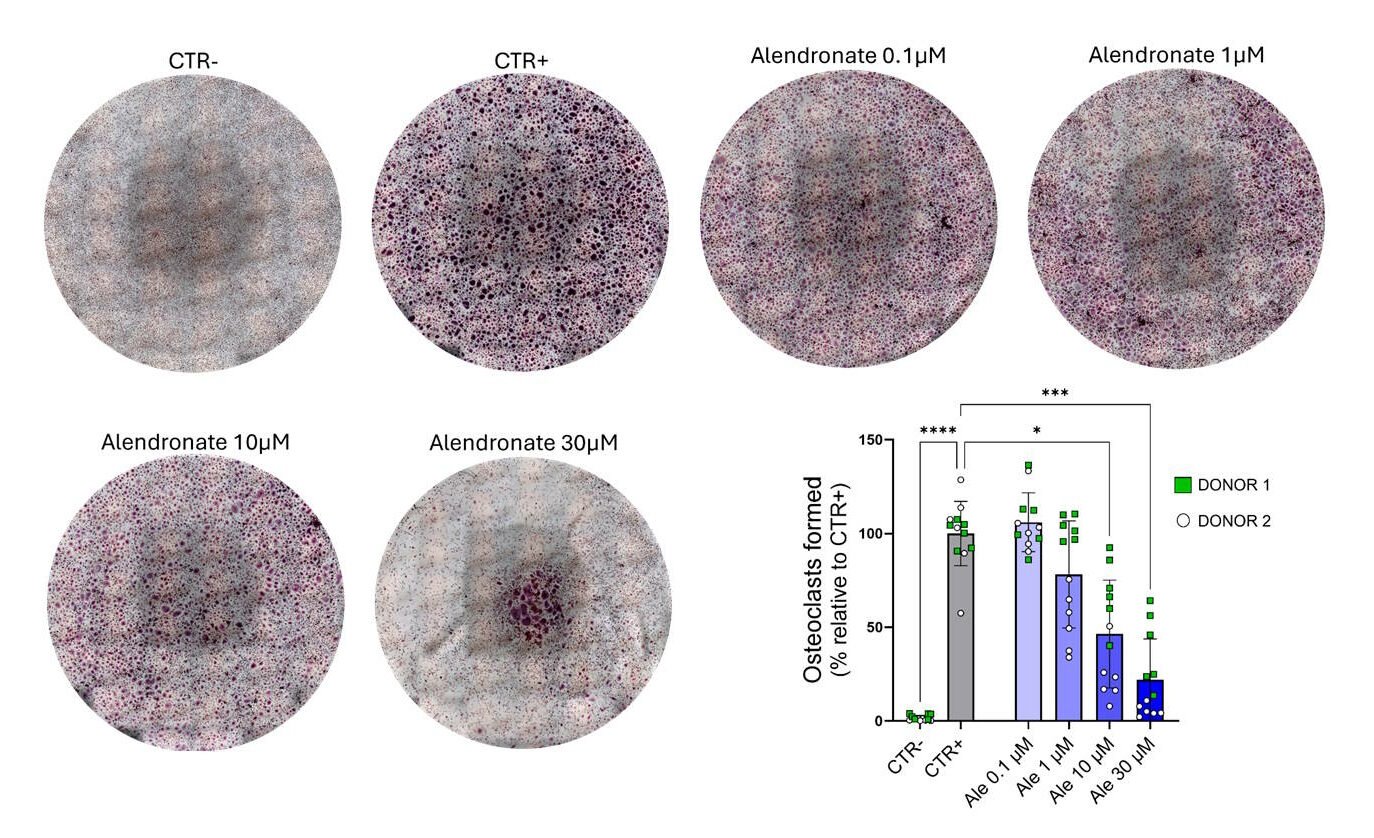From human or animal origin, testing your compounds on osteoblasts can highlight effect on bone formation

Assess the effect of your compounds on bone resorption
Derived from primary human CD14+ cells, our osteoclast model can predict the anti-resorption activity of tested compounds.
Throughout life, bone tissue undergoes continuous renewal through a process orchestrated by two key cell types: osteoblasts (responsible for bone formation) and osteoclasts (which degrade bone). This balance between bone deposition and resorption is critical for maintaining skeletal integrity. When this equilibrium shifts—whether toward excessive breakdown or insufficient formation—it can lead to pathological conditions like osteoporosis. Therapeutic agents capable of influencing this delicate interplay between bone-building and bone-resorbing activity hold significant potential for treating such disorders.
Our osteoclasts model can be used in the assessment of compounds to evaluate their effect on:
- Cell differentiation, evaluated by TRAP staining for mature osteoclasts count:

- Cell activity: evaluated by resorption pit assay and quantitative assays for matrix degradation (ELISA for CTX-I):

From human or rat origin, chondrocytes can be used to evaluate effect of your drug candidate and biomaterial on cartilage regeneration
Check if you compound has a pro-inflammatory effect or an anti-inflammatory effect on macrophages M0 and M1
Osteoporosis impacts bone strength and bone density and current treatment are not sufficient to cure this bone pathology; check our OVX model
Thanks to current capabilities and expertise, our Team can develop specific custom model for in vitro assessment of your compounds and biomaterials